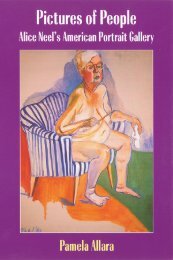The Views of Rabbi Moses Feinstein, Rabbi Abraham Joshua ...
The Views of Rabbi Moses Feinstein, Rabbi Abraham Joshua ...
The Views of Rabbi Moses Feinstein, Rabbi Abraham Joshua ...
Create successful ePaper yourself
Turn your PDF publications into a flip-book with our unique Google optimized e-Paper software.
I and Adam II is also found in Soloveitchik‘s ―Lonely Man <strong>of</strong> Faith,‖ which was,<br />
interestingly, delivered before an interfaith crowd at St. John‘s Catholic Seminary in<br />
Brighton, Massachusetts and in which Adam I and Adam II are portrayed as<br />
―embodying…two conflicting types <strong>of</strong> people,‖ 171 paralleling the different portrayals <strong>of</strong><br />
Adam in the two creation stories in the Book <strong>of</strong> Genesis. Adam I is characterized by<br />
―superficial[ity] [and] pragmati[sm]‖ 172 while being ―a man <strong>of</strong> the world, conqueror <strong>of</strong><br />
diseases…builder <strong>of</strong> bridges…[and] ‗majestic,‘‖ 173 while Adam II is characterized by<br />
―pr<strong>of</strong>und[ity] [and] purposive[ness]‖ 174 while being ―a man <strong>of</strong> the spirit, nurturer <strong>of</strong><br />
prayer…builder <strong>of</strong> true community...[and] ‗covenantal.‘‖ 175<br />
Soloveitchik also employs<br />
Jacob-Esau imagery in analyzing Jewish-Christian relations, in consonance with a strong<br />
textual tradition ―from the Talmud through medieval literature‖ 176 asserting that ―Esau<br />
and Edom represent the Gentiles, either Greeks or Romans, and other Christians.‖ 177<br />
Soloveitchik‘s conception <strong>of</strong> an ―assertive Jacob,‖ 178 however, is diametrically opposed<br />
to the traditional midrashic rendering ―<strong>of</strong> an obsequious Jacob before Esau,‖ 179 all the<br />
more ironic given the traditional Catholic theological identification <strong>of</strong> Jews as Esau and<br />
Catholics as Jacob. Such features have led some to conclude that one <strong>of</strong> the intended<br />
audiences <strong>of</strong> the ―philosophic excursus‖ 180 <strong>of</strong> ―Confrontation‖ was, in fact, the Christian<br />
community. If the Christian community was, in fact, the intended audience, Soloveitchik<br />
171 Goldberg 101<br />
172 Goldberg 101<br />
173 Goldberg 101<br />
174 Goldberg 101<br />
175 Goldberg 101<br />
176 Roth 214<br />
177 Roth 214<br />
178 Kimelman 8<br />
179 Kimelman 8<br />
180 Korn 308<br />
32
















